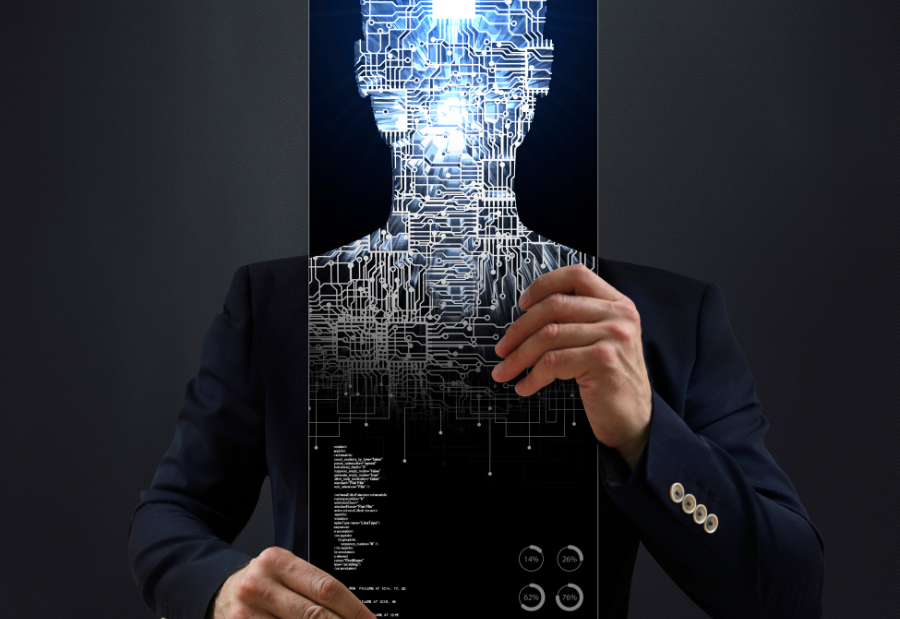Cyberattacks are a growing concern for businesses, governments, and individuals. As cybercriminals continuously evolve their tactics, Artificial Intelligence is emerging as a powerful tool to protect sensitive information and detect real-time threats. With its ability to analyze massive datasets, recognize patterns, and respond swiftly to anomalies, AI has become an essential defense mechanism in cybersecurity.
Today, let’s explore how AI is being used to prevent cyberattacks, highlighting its role in threat detection, risk management, and proactive defense.
Let’s get started!
- AI for Real-Time Threat Detection
AI-powered systems use machine learning algorithms to monitor network traffic and analyze patterns. By constantly scanning for unusual behaviour, AI can identify potential threats and vulnerabilities before they escalate.
AI’s real-time detection capabilities allow businesses to instantly respond to threats, preventing data breaches.
- AI for Phishing Detection and Prevention
Phishing attacks are among the most common forms of cybercrime. AI helps detect phishing emails by analyzing their content, structure, and origin. Natural Language Processing (NLP) is employed to spot malicious intent, suspicious links, or forged email addresses.
AI’s ability to learn from past phishing attempts ensures more accurate detection and reduces the chances of falling victim to these types of attacks.
- AI in Malware Detection and Prevention
Malware, which can come in the form of viruses, worms, or trojans, often disguises itself to evade detection. AI systems use deep learning to analyze files and software behavior to detect hidden malware.
Unlike traditional methods that rely on signature-based detection, AI can identify new or unknown malware by recognizing suspicious behaviour, even if the specific virus has never been seen before.
- AI for Predictive Risk Analysis
AI uses historical data and threat intelligence to predict future attacks. By analyzing past cybersecurity incidents, AI can assess an organization’s vulnerabilities and recommend measures to strengthen security.
Predictive AI can proactively identify potential risks and provide early warnings, allowing businesses to take preventive actions before an attack occurs.
- AI for Behavioural Analytics
AI-driven behavioural analytics continuously monitors user activity, identifying any unusual behaviour or deviations from normal patterns. If an employee suddenly accesses data they don’t usually interact with, AI can flag this as a potential security threat.
This method helps detect insider threats, cases where legitimate users intentionally or unintentionally pose a risk by misusing their access privileges.
- AI in Automating Cybersecurity Responses
In the event of a detected threat, AI can help automate the response process by following predefined protocols and taking immediate action, such as isolating affected systems or blocking malicious IP addresses.
Automation reduces human error and ensures a faster response time, minimizing damage and downtime.
- AI for Network Traffic Analysis
AI tools monitor and analyze network traffic to identify signs of DDoS (Distributed Denial of Service) attacks, which flood systems with excessive traffic to disrupt operations. AI can identify unusual spikes in traffic and take corrective measures to prevent the attack from crippling systems.
AI’s ability to instantly detect abnormal traffic patterns enables faster and more accurate mitigation of DDoS attacks.
- AI for Enhancing Endpoint Security
With the growing number of devices in workplaces (laptops, smartphones, IoT devices), securing endpoints is a major concern. AI-powered endpoint protection solutions can analyze device behaviour, detect vulnerabilities, and protect against ransomware, malware, and other attacks.
AI-enabled endpoint security offers more comprehensive protection, as it can rapidly identify and neutralize threats before they spread to other parts of the network.
Conclusion
The role of AI in cybersecurity is more vital than ever. From real-time threat detection to predictive analytics and automated responses, AI is revolutionizing the way organizations protect their data and assets. However, as AI technology advances, so too will the tactics of cybercriminals, making it essential for businesses to continuously adapt their defenses.
By incorporating AI into cybersecurity strategies, businesses can stay ahead of evolving threats, minimize risk, and ensure stronger protection for sensitive data. The combination of AI’s speed, accuracy, and learning capabilities makes it a formidable tool in the ongoing battle against cybercrime.
Call to Action: Don’t wait for a cyberattack to disrupt your business. Start integrating AI-powered cybersecurity solutions today and stay ahead of potential threats to safeguard your organization’s future.
Also read: Viksit Workforce for a Viksit Bharat
Do Follow: The Mainstream formerly known as CIO News LinkedIn Account | The Mainstream formerly known as CIO News Facebook | The Mainstream formerly known as CIO News Youtube | The Mainstream formerly known as CIO News Twitter
About us:
The Mainstream formerly known as CIO News is a premier platform dedicated to delivering latest news, updates, and insights from the tech industry. With its strong foundation of intellectual property and thought leadership, the platform is well-positioned to stay ahead of the curve and lead conversations about how technology shapes our world. From its early days as CIO News to its rebranding as The Mainstream on November 28, 2024, it has been expanding its global reach, targeting key markets in the Middle East & Africa, ASEAN, the USA, and the UK. The Mainstream is a vision to put technology at the center of every conversation, inspiring professionals and organizations to embrace the future of tech.




